Abstract
Reviewed in this article are epidemiological studies included in the WHO Global Oral Data Bank for noninstitutionalized European adults aged 65-74 years for the period 1986-96. Edentulous percentages, decayed, missing, filled teeth (DMFT) index, and data on the mean number of teeth are presented. At least one representative study had been carried out in 48% of the countries, with the quantity of information from countries with developed market economies being similar to that from countries with economies in transition. The proportion of 65-74-year-olds who were edentulous varied from 12.8% to 69.6%, the mean number of teeth ranged from 15.1 to 3.8, and the DMFT index from 22.2 to 30.2. The observed disparities in the oral health status among older European adults suggest that it may be possible to develop and implement oral health policies that take into account geographical and socioeconomic differences in populations.
Full text
PDF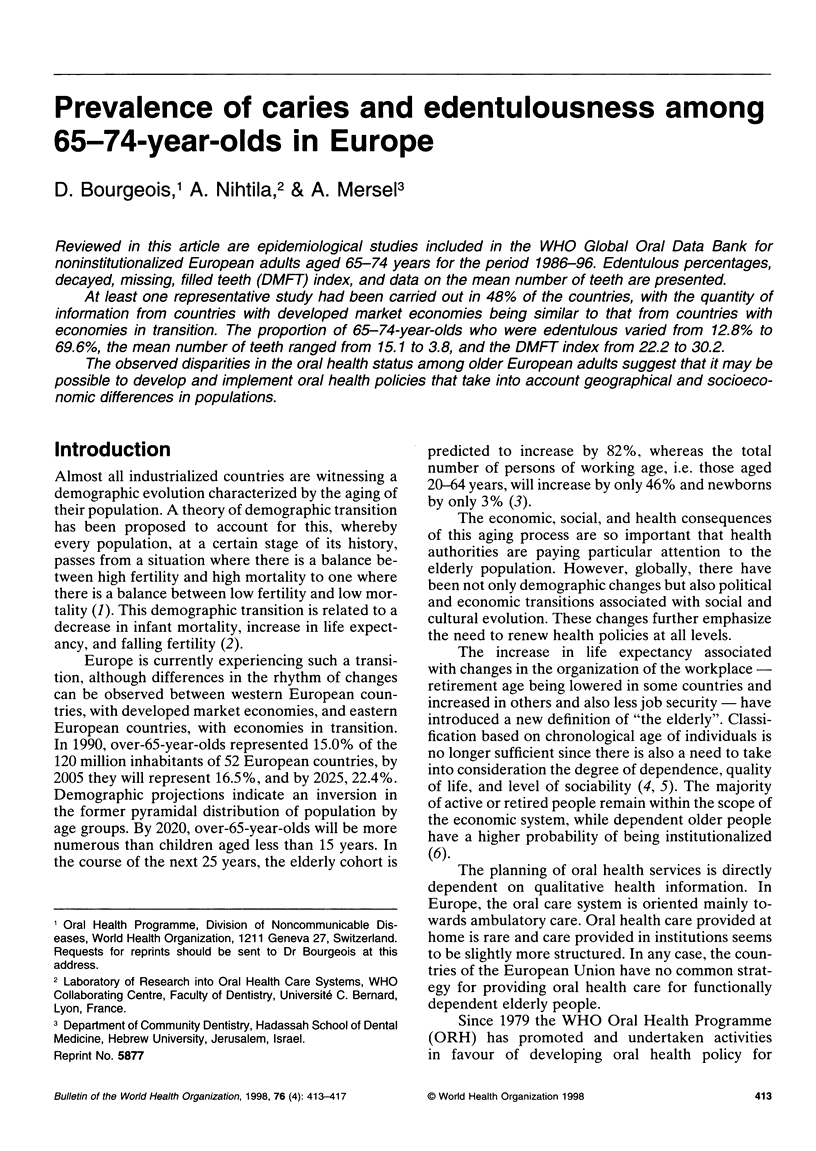
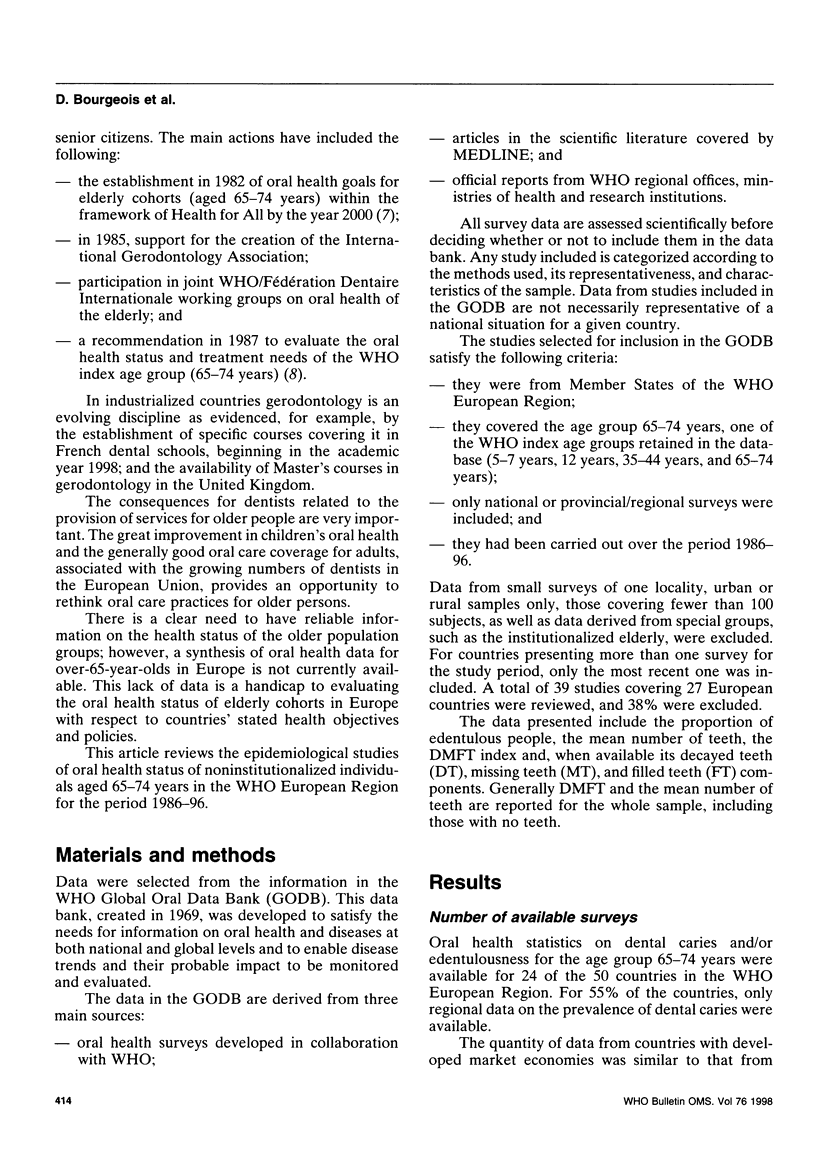
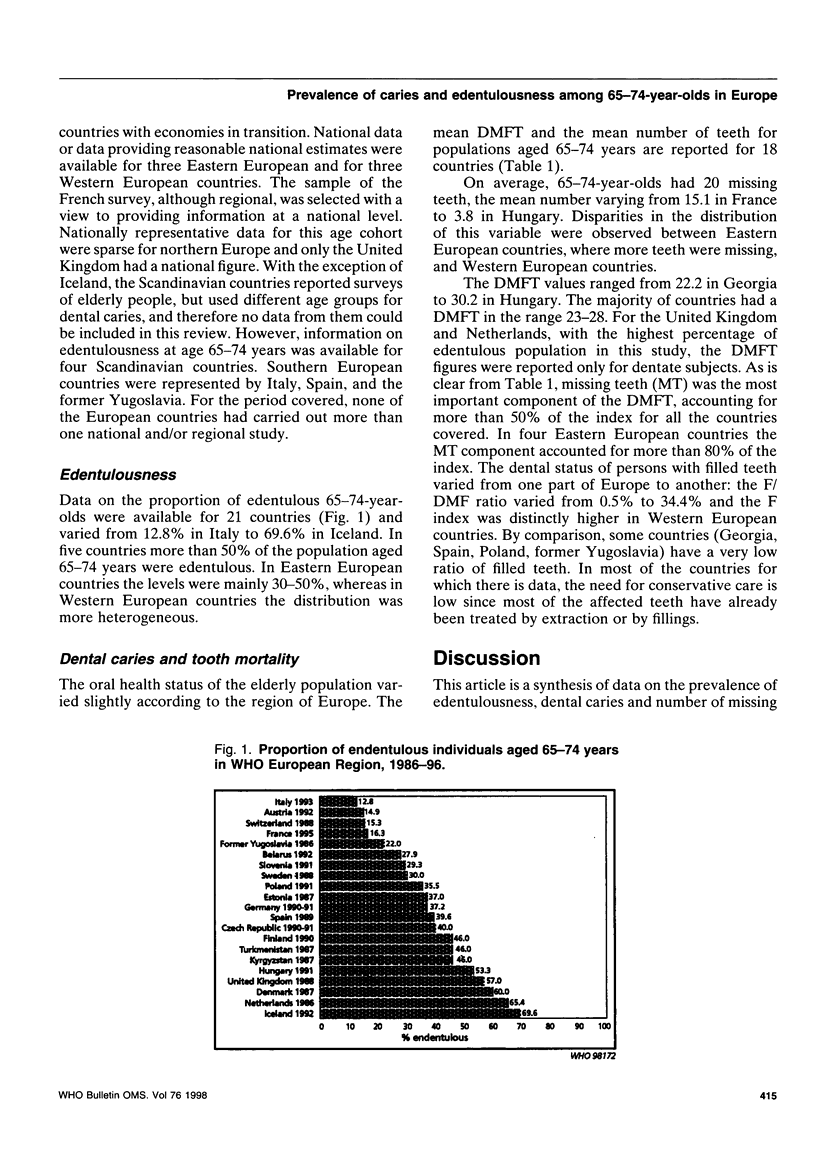
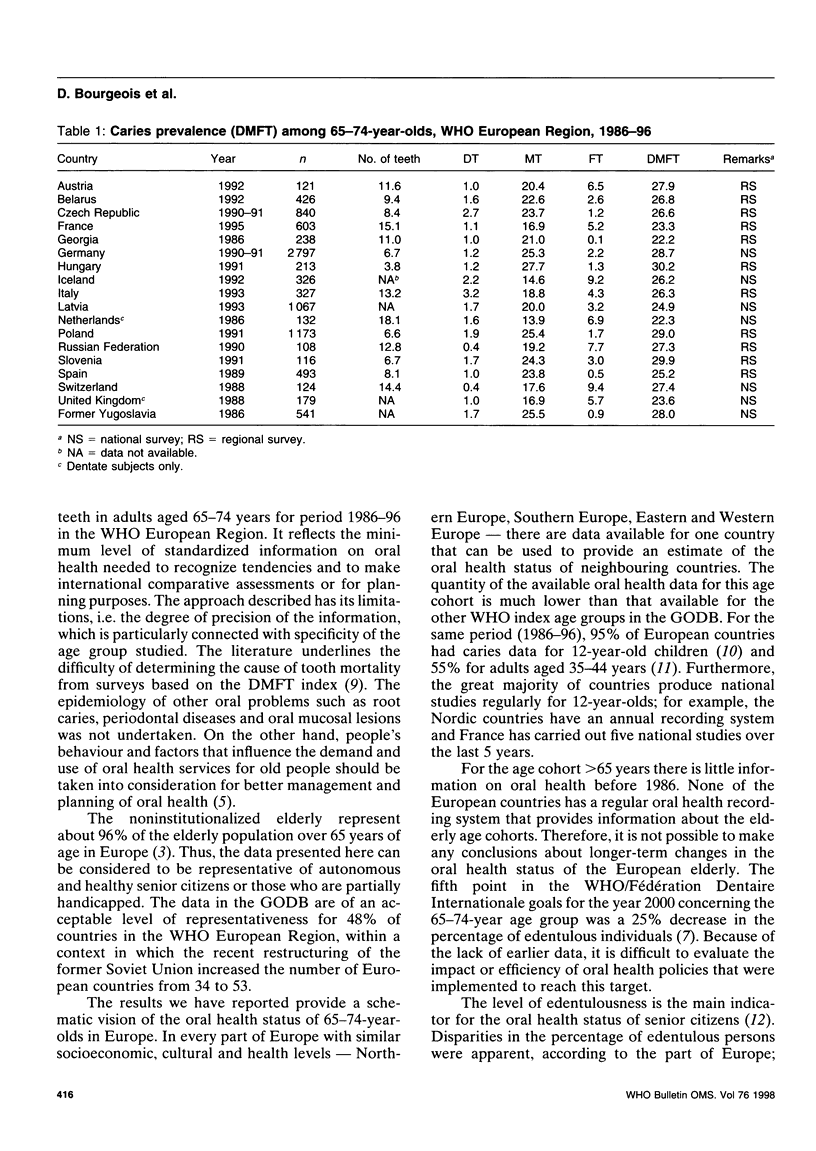
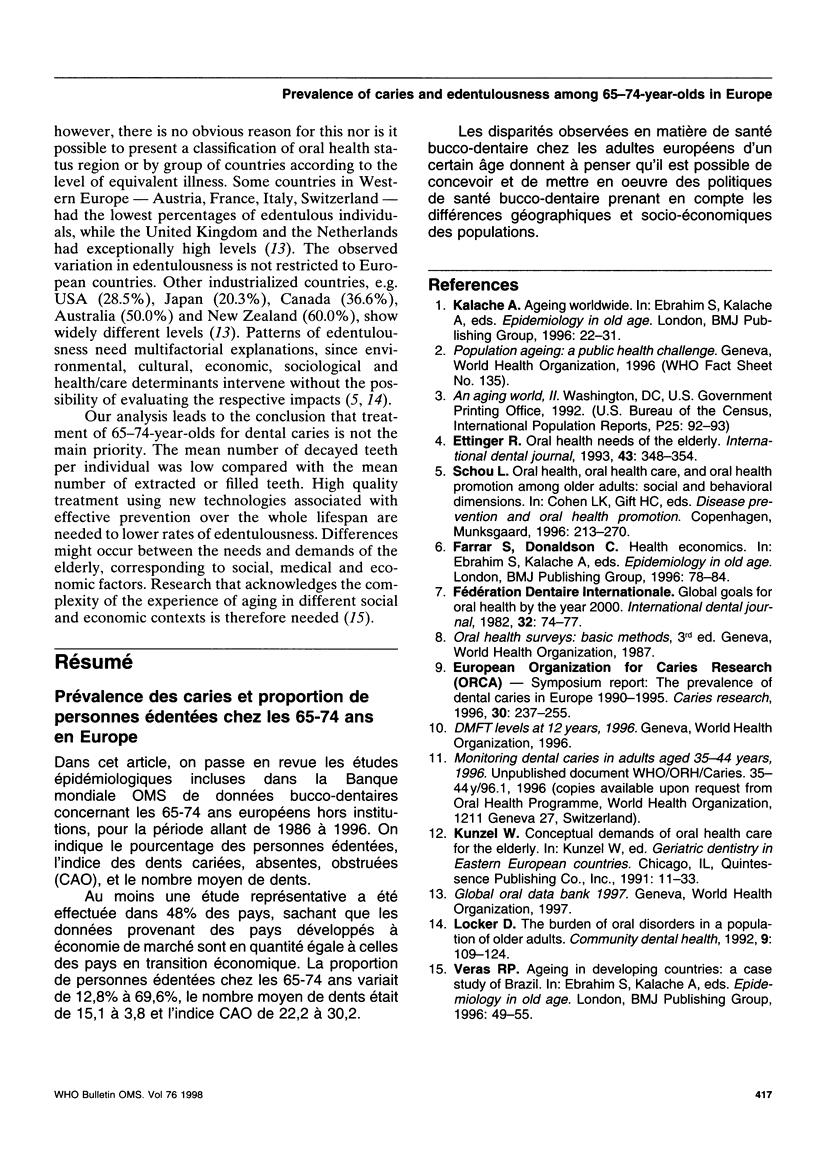
Selected References
These references are in PubMed. This may not be the complete list of references from this article.
- Locker D. The burden of oral disorders in a population of older adults. Community Dent Health. 1992 Jun;9(2):109–124. [PubMed] [Google Scholar]


